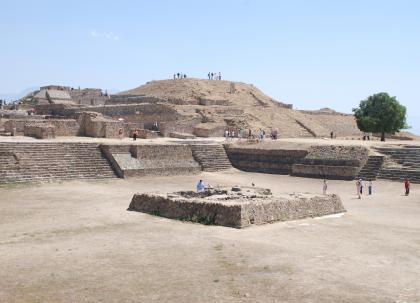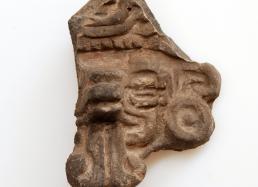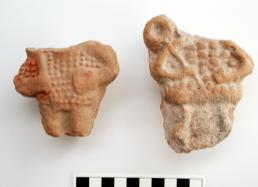8. Religion as Motivator & Divider
The late renowned anthropologist, Franz Boas—who incidentally had a brief stopover at The Field Museum over a century ago—made many contributions to the social and cultural sciences. One of his key thematic anthropological themes was that, in human populations, biological variation, language, and culture are rarely passed along together as a tight or neat package.
For example, many recent genetic studies have shown that Arabs and Jews are basically blood brothers, sharing a close biological history. But of course, in religion and certain other aspects of culture, these populations are anything but unified.
Clearly, religion plays many diverse roles in society and culture: a path for understanding, a motivator, a force for building common ground. But as we see in many areas of the world today, religions also can serve as a reinforcing factor in social division. Could similar processes have also been at work many centuries ago in the Valley of Oaxaca? Can this question even be assessed?
As I mentioned in earlier dispatches, Monte Albán was a unique and central place in the Valley of Oaxaca for more than a thousand years before its slow collapse late in the first millennium A.D. Situated on hills at the axis of the valley’s three arms, this early city was founded around 500 B.C. and quickly became the largest and by far the most monumental settlement in the region, with a giant Main Plaza flattened at the top of the main hill (see above photo.) For centuries, Monte Albán held a near monopoly on written texts for the Valley of Oaxaca.
For much of the site’s predominance, particularly during the Classic period (A.D. 200-850), representations of the supernatural Cocijo, or lightning (or people portraying this supernatural), were iconic features on Zapotec effigy vessels or urns. During this period, urns featuring Cocijo were found across the region, basically within Monte Albán’s sphere of influence. I suspect that the rather precipitous disappearance of the effigy vessels with Cocijo representations after A.D. 900 was closely timed with the decline of Monte Albán’s power and influence.
As noted before in a prior dispatch, Lambityeco was the first site where archaeologists (namely John Paddock) noted a shift away from the long-established canons associated with Monte Albán. But Paddock attributed these changes to time, thinking that Lambityeco post-dated Monte Albán, which turned out to be basically incorrect.
Nevertheless, despite prominent representations of Cocijo in stucco sculptures and on effigy vessels found in prominent tombs at Lambityeco, Paddock’s assessment of other differences with Monte Albán was “on the money.” More to the point, the stucco Cocijos and even most of the prominently placed Cocijo effigy urns stem from relatively early occupation levels from this core sector of Lambityeco.
When we tallied the figurine and effigy whistle fragments from our 2013 excavations of Mound 165, there were more than 800, an astonishing figure more than four times larger than what we recovered from the biggest and most elaborate palace at El Palmillo (which took more than twice as much time to excavate).
At the same time, we found relatively few urn/effigy vessel fragments (a few dozen at most) and only one representation of Cocijo (which was noted in the lowest or first occupation level—see Photo #1 below.) Instead, the most abundant effigy whistles and full-body figurines (see Photos #2 and #3 below) found in Mound 165 seem to signal a somewhat different or new set of symbols and even distinct rituals indicative of a new order.
While Cocijo is rare in our collections from this year, many of the Lambityeco whistles and figurines seem to have associations with another prehispanic Mesoamerican supernatural, Xipe Totec, who was linked to fertility and renewal, but also war. It would seem that the rulers of Lambityeco used these new canons to distinguish old ways and beliefs from the new, perhaps trying to shift loyalties toward them and away from Monte Albán.
They may not have succeeded completely, as Lambityeco ultimately fell earlier than Monte Albán, as well as other sites closer at hand, such as El Palmillo, the Mitla Fortress, and nearby Yagul (where INAH also has an archaeological zone). But this movement also contributed to Monte Albán’s loss of power and eventual decline.
As we still see today, religion in the past may have been a force that divided at times, while simultaneously providing ways to bring people together and forge new coalitions.
More soon,
Gary








